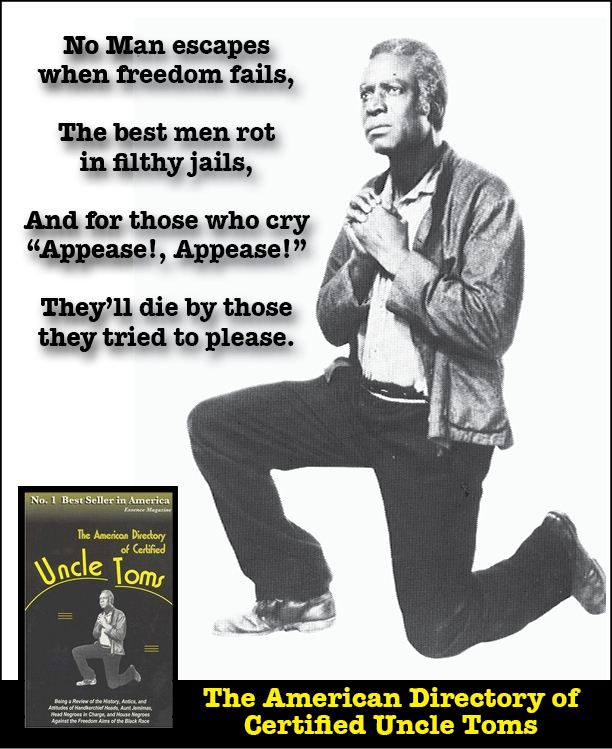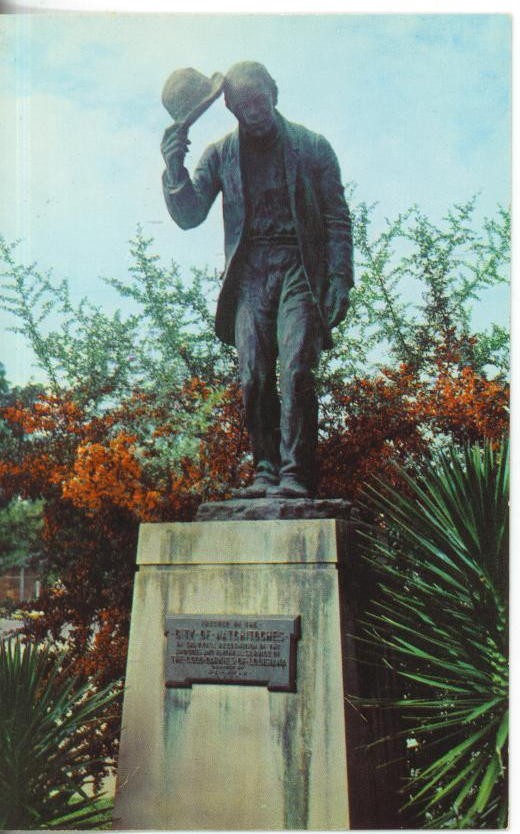Race “Etiquette” and the Black Buck-Dance
[Excerpt from The American Directory of Certified Uncle Toms: Being a Review of the History, Antics, and Attitudes of Handkerchief Heads, Aunt Jemimas, Head Negroes in Charge, and House Negroes Against the Freedom Aims of the Black Race]
Blacks in white America were forced to comply with a peculiar mode of behavior known traditionally as southern racial etiquette. Acquiescent Blacks unresistingly adopted the code of conduct, which they neither questioned nor offended. The Black Code of Louisiana, for example, set the tone for the region with this most basic of rules:
“[Blacks] ought never to presume to conceive themselves equal to the white; but, on the contrary, they ought to yield to them in every occasion, and never speak or answer to them, except with respect.”
What became commonly known among southern children as a “whuppin” emerged from attempts by their parents to wrench a naturally free Black mind into a submissive negro mentality—before the white man applied his own deadly methods. Older slaves, skilled in the fine art of ingratiation, were charged with showing the child “a nigger’s place,” perhaps through slaps and spankings, but mostly through their own example. In due time the etiquette and status common to slaves became customary. Some of the white behavioral requirements were embellishments on Harriet Beecher Stowe’s Uncle Tom model, further delineating acceptable Black comportment:
-
If a conversation were necessary between a white person and a slave, the latter either removed his hat, or touched it, as though he might remove it, at the end of every sentence. If he had no hat, he pulled at his forelock, kept his eyes on the ground while the conversation lasted, and uttered “suh” or “ma’am” at least once in every complete sentence. The use of “suh” as opposed to “sir” is an important distinction, as “sir” was thought to be too “educated” a response and thus disrespectful to whites.
-
The responsibility of beginning and ending a conversation always rested with the white person. The good nigger did not initiate a conversation, or enter into one, unless first addressed by a white man. Certain topics that were generally known to all were entirely off-limits in any interracial conversation, and the good nigger never contradicted a white person for any reason.

“Good Darky” statue in Louisiana.
- No slave was ever allowed to sit down in the presence of master or mistress.
- Slaves were to either laugh, or grin, when they committed breaches of etiquette, or when they did not know precisely how to act.
These behaviors lasted well beyond slavery and into modern times. Through the turn of the 19th century and into the Jim Crow 1960s, Blacks were required to wait in line until all whites were served. They could approach white homes only by the back door. They were required to yield the right of way to whites when driving or walking. Blacks could not smoke cigars in white company. To avoid the appearance of wealth or prestige, Blacks would never wear dress clothes on weekdays and never drive large or expensive cars. Few Blacks would risk appearing intelligent or freethinking. Said one Mississippian: “[T]o be known as a smart nigger would have been unbearable.” Eating, drinking, card playing, chatting in the parlor of a white home were all forbidden.”
